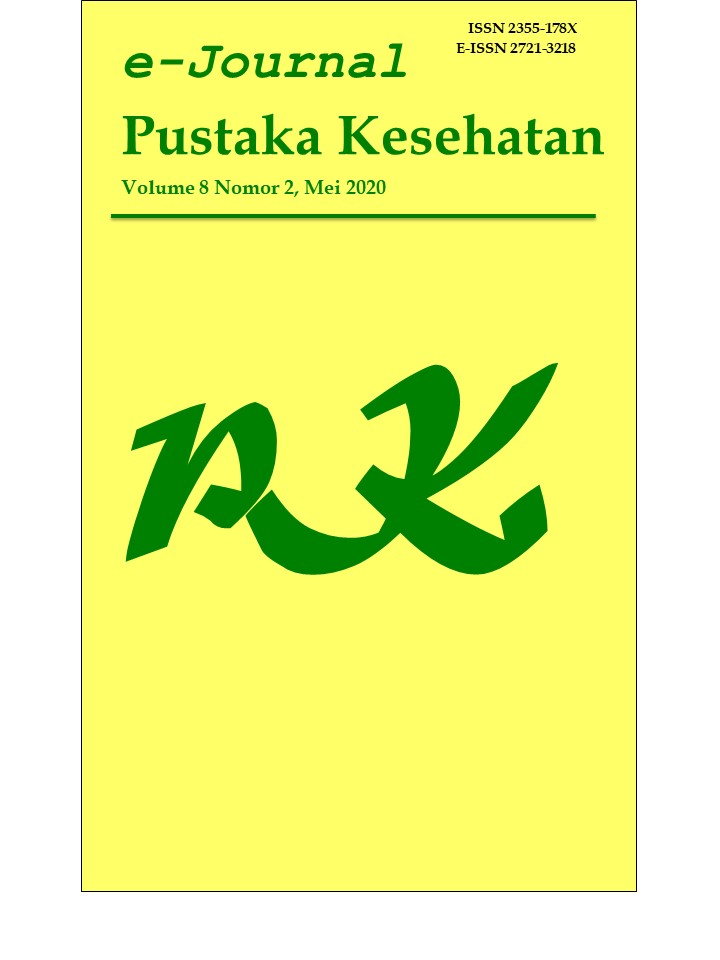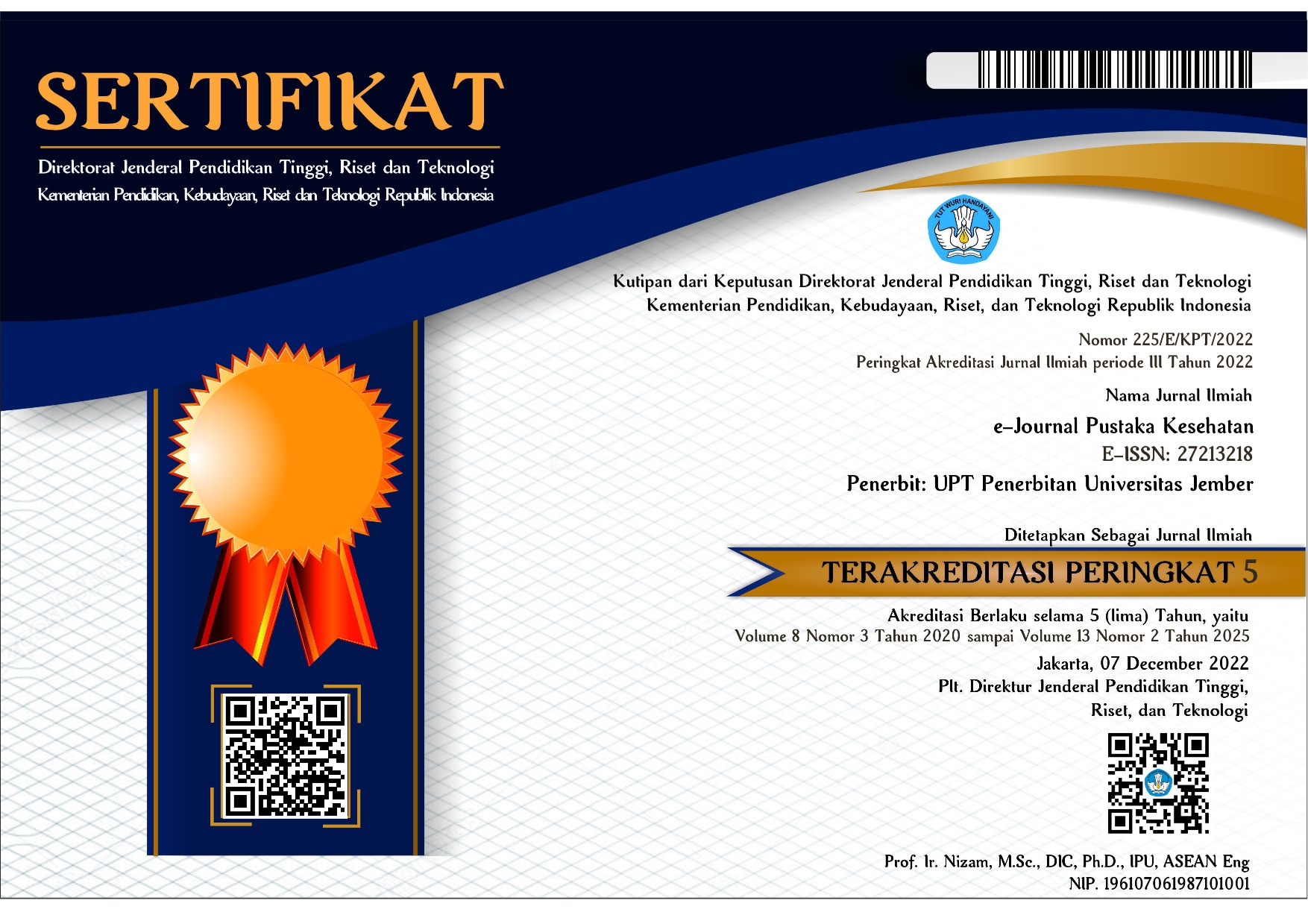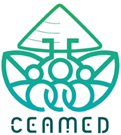Pengembangan Sensor untuk Mendeteksi Kesegaran Buah Durian (Durio zibethinus Murr.) Kupas Berbasis Indikator Alami Ekstrak Kayu Secang (Caesalpinia sappan L.)
DOI:
https://doi.org/10.19184/pk.v8i2.14338Keywords:
durian pulp freshness, sensor, sappan wood decoct, pH, SSCAbstract
Durian is a famous native fruit from Southeast Asia and usually sold within durian-cut packaging in the supermarket because it is handy and ready to serve. However, its freshness level is unknown. Sensor, made by sappanwood decoct extract, can be used to detect the fruit freshness within the packaging. The aim of this research was to develop a sensor to detect cut durian freshness based on natural indicators from sappanwood extract. Indicator solution of sappanwood decoction consist of sappanwood decoct extract, phosphate buffer pH 7,5 and polyvinyl alcohol (PVA). The color change from sensor was examined by ImageJ software to get mean red. Durian pulp was examined every day to get pH and SSC (Solid Soluable Concentration) value in for 5 days of storage at room temperature. The result of rotten pulp durian was showed by the color-changing of the sensor from red purplish to yellow with mean red 224,215 ± 0,161. Durian pulp freshness in room temperature decreased as the pH decreased from 7,46 to 4,20 and as the SSC decreased from 7,60 to 2,40, followed by the color-changing of the sensor. Furthermore, the level of durian pulp freshness can be detected by freshness sensor based on natural indicators from sappanwood extract at room temperature storage.
Downloads
References
[2] Widiastuti DR. Kajian Kemasan Pangan Aktif dan Cerdas ( Active and Intelligent Food Packaging ). Badan Pengawas Obat dan Makanan. 2016. 8-10 p.
[3] Kuswandi B, Wicaksono Y, Jayus, Abdullah A, Heng LY, Ahmad M. Smart packaging: Sensors for monitoring of food quality and safety. Sensing and Instrumentation for Food Quality and Safety. 2011;5(3–4):137–46.
[4] Purbaningtias TE, Lestari ID, Wiyantoko B, Kurniawati P, Sriadryani D. Utilization of natural indicators for borax identification in the Indonesian tofu. In: AIP Conference Proceedings [Internet]. American Institute of Physics; 2017. p. 020057. Tersedia dari: http://aip.scitation.org/doi/abs/10.1063/1.4 978130
[5] Ulma Z, Rahayuningsih E, Wahyuningsih TD. Methylation of Brazilein on Secang (Caesalpinia sappan L. ) Wood Extract for Maintain Color Stability to the Changes of pH. In: IOP Conference Series: Materials Science and Engineering [Internet]. IOP Publishing; 2018. p. 012075. Tersedia dari:http://stacks.iop.org/1757-899X/299/i=1/a=012075? key=crossref.aa0085183c2697e5501336e 0db402922
[6] Rina O, Ibrahim S, Dharma A, Afrizal, W CU, Widodo YR. Stabilities Natural Colorant of Sappan Wood (Caesalpinia sappan L.) For Food and Beverages in Various pH, Temperature, and Matrices of Food. International Journal of ChemTech Research. 2017;10(1):98–103.
[7] Ditjen POM. Cara Pembuatan Simplisia [Internet]. Jakarta: Departemen Kesehatan Republik Indonesia; 1985. Available from: http://books.google.com/books? id=pfW3AAAAIAAJ
[8] Voon YY, Hamid NSA, Rusul G, Osman A, Quek SY. Physicochemical, microbial and sensory changes of minimally processed durian (Durio zibethinus cv. D24) during storage at 4 and 28 °C. Postharvest Biology and Technology. 2006;42(2):168– 75.
[9] Winarno FG, Aman M. Fisiologi Lepas Panen. Bogor: Sastra Hudaya; 1979.
[10] Pantastico EB. Postharvest Physiology, Handling and Utilization of Tropical and Sub-tropical Fruits and Vegetables. Laguna, Philipines: The Avi Publishing Company; 1975.
Downloads
Published
Issue
Section
License
e-Journal Pustaka Kesehatan has CC-BY-SA or an equivalent license as the optimal license for the publication, distribution, use, and reuse of scholarly work. Authors who publish with this journal retain copyright and grant the journal right of first publication with the work simultaneously licensed under a Creative Commons Attribution-ShareAlike 4.0 International License that allows others to share the work with an acknowledgment of the work's authorship and initial publication in this journal.







